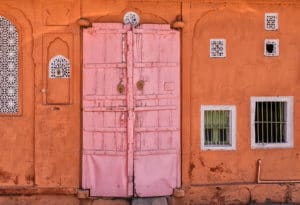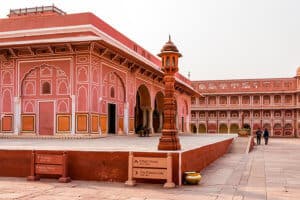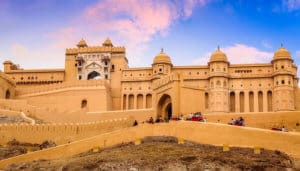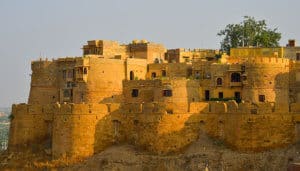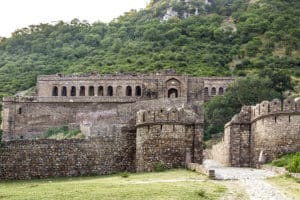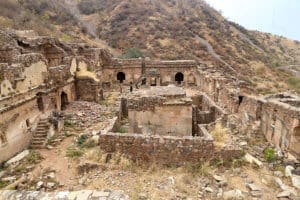To wanderers and explorers around the world, India has always been a land of ancient, mystic charm. When Vasco Da Gama first landed on Indian soil in 1498, he opened a route to the land of spices and spirituality for the European world. Although every part of this country has a vibrancy and flavour of its own, the state of Rajasthan is perhaps the most colourful of them all. This northern desert land is full of the stuff of nomadic tales, and it attracts tourists from around the world. It is the rich cultural heritage of Rajasthan that makes it so full of vivacity and vibrancy. So let us take you on a journey through the cultural heritage of one of the most colourful states of India.
Travel and tourism
Rajasthan is the land of the Maharajas, the colloquial term for a king or emperor in India. The word Rajasthan literally translates to ‘the abode of the kings’ in Hindi. Its capital, Jaipur, is known as the ‘Pink City’ as every building within the walled historic centre is painted in pink. The colour pink has historically stood as a symbol of welcome and hospitality. No wonder the place is flooded with tourists from around the world.
The place is well connected to the outside world with both national and International flights and boasts of luxurious palaces that have been converted into hotels and can make guests feel like royalty. Other notable cities in Rajasthan are Jodhpur, Ajmer, Udaipur, and Jaisalmer. Almost every major city in this state has a moniker of its own.
While Jaisalmer is known as the ‘Golden city’, the cities of Jodhpur and Udaipur are known as ‘The Blue City’ and ‘The City of Lakes’ respectively. One might guess the colourfulness of Rajasthan from the names of its cities alone! The Great Indian Desert, or the Thar Desert, occupies a major part of Rajasthan and imparts a mysterious air to this place. Watching the sunset on the Thar Desert as a caravan of camels passes by is an unforgettable experience!
Architecture
The Architecture of Rajasthan is mostly a blend of the Rajputana and Mughal styles, named after the two most important dynasties that ruled over Rajasthan. The mesmerizingly carved Havelis, the imposing forts and the grand temples are bound to inspire awe in the beholder.
Six Hill Forts in Rajasthan have been designated as UNESCO World heritage sites, including notable ones like the Amer Fort in Jaipur and the Jaisalmer Fort in Jaisalmer. Some of these forts have defensive walls that extend to around 20km.

Another interesting monument in Rajasthan is the famed ‘Hawa Mahal’, or ‘The Palace of Winds’. The palace is made of red and pink sandstone and is located right beside the City Palace in Jaipur. The exterior of this palace is akin to a honeycomb, and the five storeyed structure has around 953 small windows called ‘Jharokhas’. This architectural feature allows the cool air to pass through, making the area pleasanter during the hot summer months and imparting the name ‘Hawa Mahal’ to the Palace.
Jantar Mantar is another architectural delight in Jaipur city, distinguished by around 19 architectural astronomical instruments. The Jantar Mantar features the world’s largest stone sundial, and the instruments here allow the observation of astronomical positions with the naked eye!
Folklore
Many stories surrounding the royal families of Rajasthan have inspired Indian writers and film makers for years. One such story is about Queen Padmavati. This classic love story speaks of King Ratan Singh and his beautiful wife, Padmavati. Alaudin Khilji, the emperor of the powerful Khalji dynasty, was so smitten by the ephemeral beauty of Padmavati. He then launched an attack on Ratan Singh’s kingdom. However, the Rajput queen committed ‘Johar’ (self-immolation) along with other women of the court. This was done in order to maintain the honour of the land.
Another interesting story from the land of Rajasthan is of the love of the great Mughal emperor Akbar for the Rajput princess Jodha, who was the daughter of the Hindu king of Amer. She eventually married a Muslim Mughal emperor, sending out a message of religious tolerance to the world.
Apart from the romantic and dream-like tales of the royals, the folktales of Rajasthan also include stories of mystery and horror. The Bhangarh Fort in Rajasthan, known as the most haunted place in India, has a lot of mysterious stories revolving around it. The Fort stands in the abandoned town of Bhangarh in Alwar. The Archaeological Survey of India notes that visitors are prohibited from visiting the site after sundown. The locals have many versions of the story, and curious visitors keep flocking to the Fort to unravel the mystery.
Music and Dance
The colourful state of Rajasthan abounds in rich oral narratives as well as a wealth of written literature. The folk musicians of Rajasthan can easily be seen bringing these stories to life with their songs. The music has a very rustic and nomadic feel about it and can transport one to the days of long ago. Dancing, singing, drama, and puppet shows form an essential part of Rajasthani culture.
The typical dance of Rajasthan is the ‘Ghoomar’. It is performed by women swaying in circles to convey the joyousness and celebrate the essence of any auspicious occasion. Another famous dance form is the ‘Kachhi Ghori’, where men in colourful attire ride elaborately dressed dummy horses.
However, the most loved of all the Rajasthani dances is perhaps the ‘Kathputli’ dance. In the true sense of its name, this is the dance of puppets. Traditional folktales of the valour of the kings and the time of enduring love stories are carefully crafted. They are presented with the use of wooden puppets dressed in authentic Rajasthani attire. The vivaciousness of the songs and dances of Rajasthan are a tribute to the magnificence and valour of the ‘Rajaputana’ traditions.
When it comes to food, Rajasthan boasts a unique cuisine that has been inspired by centuries of royal heritage. When in Rajasthan, trying the ‘Daal Baati Churma’ is a must for lovers of spicy food. It is a wholesome and healthy meal that also serves as a staple diet for the Rajasthani population during the winters.
The Soul of Inidia
Rajasthani people are as splendid and welcoming as their state. The commonly used dialect here is Rajasthani, even though Hindi is widely spoken in most parts of the province. Striking and melodic, the Rajasthani lingo is a pleasure to the ear. Rajasthan exemplifies the soul of Incredible India in itself. With its countless fairs and festivals, Rajasthan is always in the mood for celebration and frolic!
Photos: Shutterstock
Support us!
All your donations will be used to pay the magazine’s journalists and to support the ongoing costs of maintaining the site.
Share this post
Interested in co-operating with us?
We are open to co-operation from writers and businesses alike. You can reach us on our email at [email protected]/[email protected] and we will get back to you as quick as we can.

